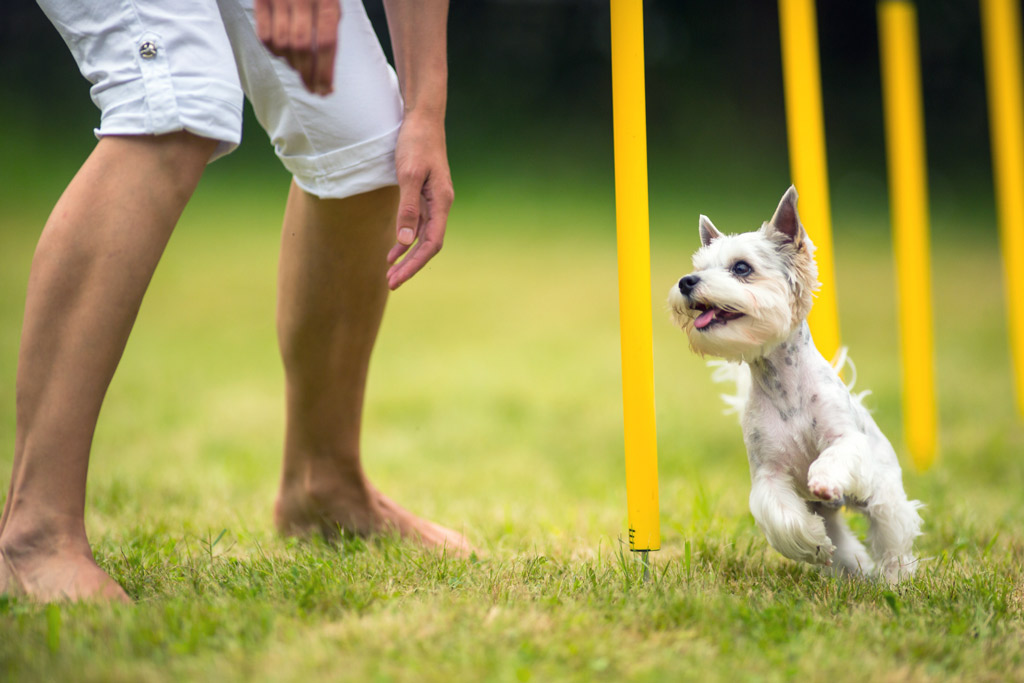
When the weather doesn’t get in your way, the most fun thing you can do with your pooch is to take her exercise routine outdoors!
All dogs need exercise and being outdoors is a thrilling experience for them. So, without further due, let me show you some activities to try with your dog and discover what works best for the two of you. 😉
Dog Exercise Outdoors
Outdoors just means stepping out of your house, but not your garden! For those of you who have less time for field trips, there are plenty of activities and games to engage with your dog in your backyard!
Just make sure that your backyard is secure:
- Fully fenced garden (1,80 m or 5.9 feet high fence). Also, escape-artist proofed (huskies, for instance, jump pretty high). If you don’t have a high fence, you shouldn’t play with an unleashed dog.
- Always supervise any backyard game, especially if toys or water are involved.

However, for those of you that love the outdoors and have the time to take trips to the mountains or the beach, I have got you covered 🙂
How to burn off your dog’s energy and have fun outdoors? Here are 18 dog exercises, games and activities to keep your pooch physically – and mentally – active whilst staying outdoors:
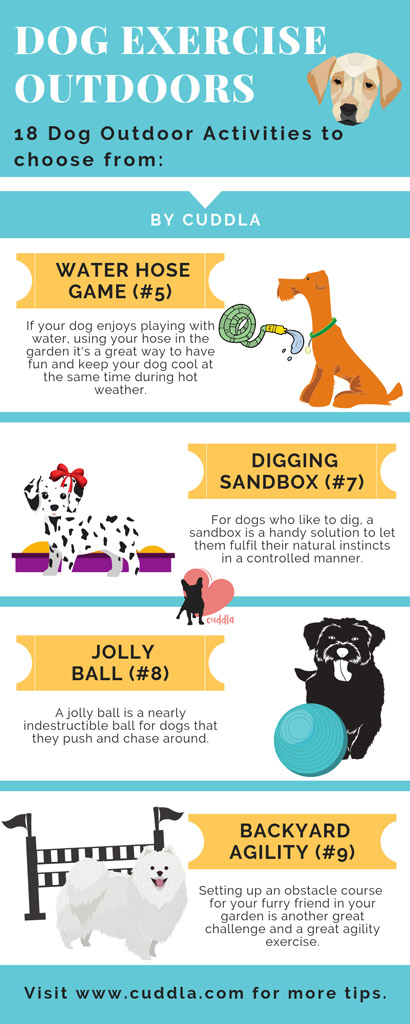
#1 – Flirt Pole
A flirt pole (also called flirt stick) is like a fishing rod, i.e., it has a long handle, a thin rope and a dog toy attached to the end (the lure).
- Clear the play area of things the dog could crash into, and let the game begin.
- It’s a chase game where you simply move the lure along the ground around in circles or in different directions as your dog chases it.
- Let her catch the toy occasionally, but not destroying it. It is important that this be a controlled exercise since flirt poles utilize your dog’s instinct to chase in a non-destructive manner.
- Use the “drop it” command to finalize the game and put the toy away.
This is a great way to exercise a dog without a lot of space, having your dog running, jumping and chasing the toy. It’s a high-impact activity that promotes a whole-body workout and strengthens your dog’s muscles. When starting out, keep the sessions short to avoid injuries.
Dog Exercise Equipment: a flirt pole (Amazon link).
For DIY lovers, you can make your own flirt pole with some PVC pipe, some bungee cord and a dog toy.
Best for: high-energy dogs.
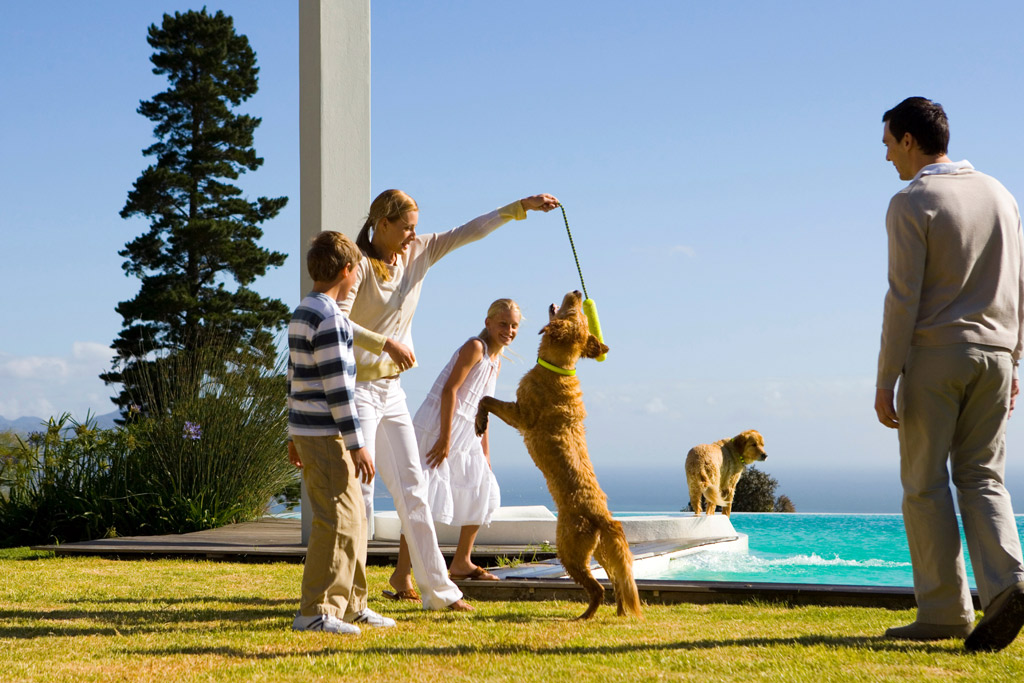
#2 – Retrieve Games
Fetch games are highly interactive, which makes them ideal for playtime with your dog. It’s also a great exercise to bond with your dog!
Many puppies love fetching balls or catching frisbees. Others love to chase after soft toys. And some dogs love things that bounce around unpredictably, making them more challenging to go after.
As Dominic Hodgson says, “You want to discover what your dog’s kryptonite is”, i.e. which toys she loves the most, then let your dog play with her favourite ones during playtime session. It will be a great reward for her!
Playing fetch in the garden:
- Stand at one corner of your garden with your dog.
- Then toss the toy to the opposite side. For senior dogs, you can tone down the game by rolling the ball down the grass.
- Shower your dog with cuddles and an occasional treat when she brings the toy back to you and drops it.
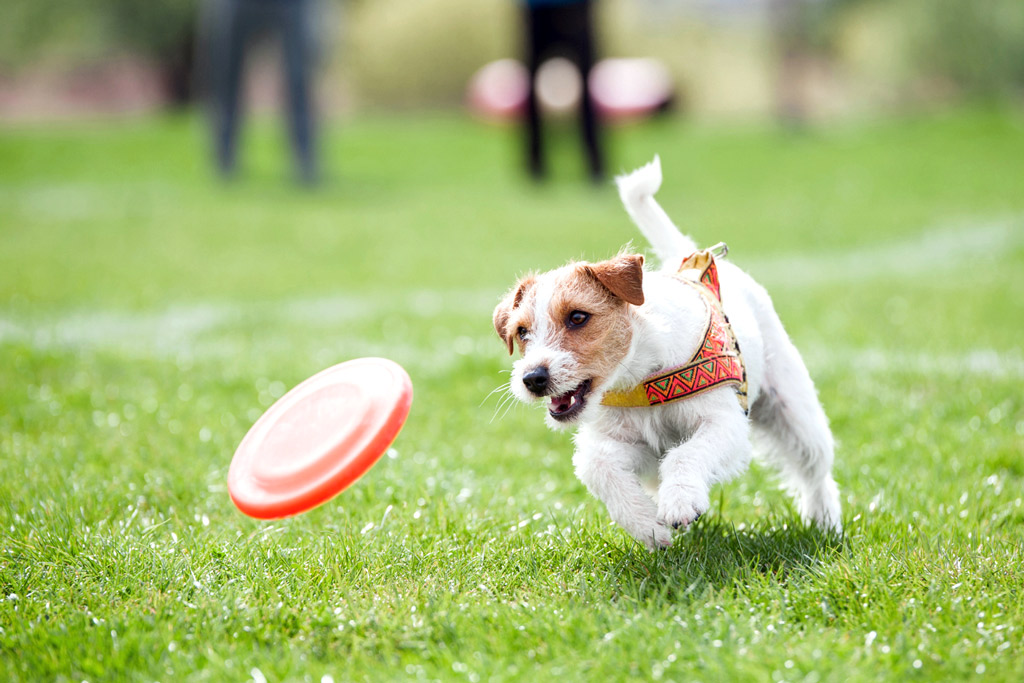
Some dogs don’t need to be taught to retrieve toys. However, you can encourage dogs without an ingrained interest in retrieving a ball too. Some dogs aren’t “mouthy” and won’t pick up a thrown toy, but you can reinforce the “picking up” behaviour.
How to teach fetch games:
- Smear peanut butter or cheese on their favourite toy or a ball.
- Reinforce the picking up behaviour by rewarding any contact with the ball with a treat.
- Continue teaching her for a series of days or weeks.
- Raise the criteria so that you eventually you only reward her for picking up the ball, and then for bringing it back to you.
Dog Exercise Equipment: a tennis size ball or a plastic frisbee (too hard for newbies). Soft discs and rubber frisbee are great alternatives to typical hard frisbee (Amazon links).
P.S. You could also go for an automatic ball thrower like iFetch.
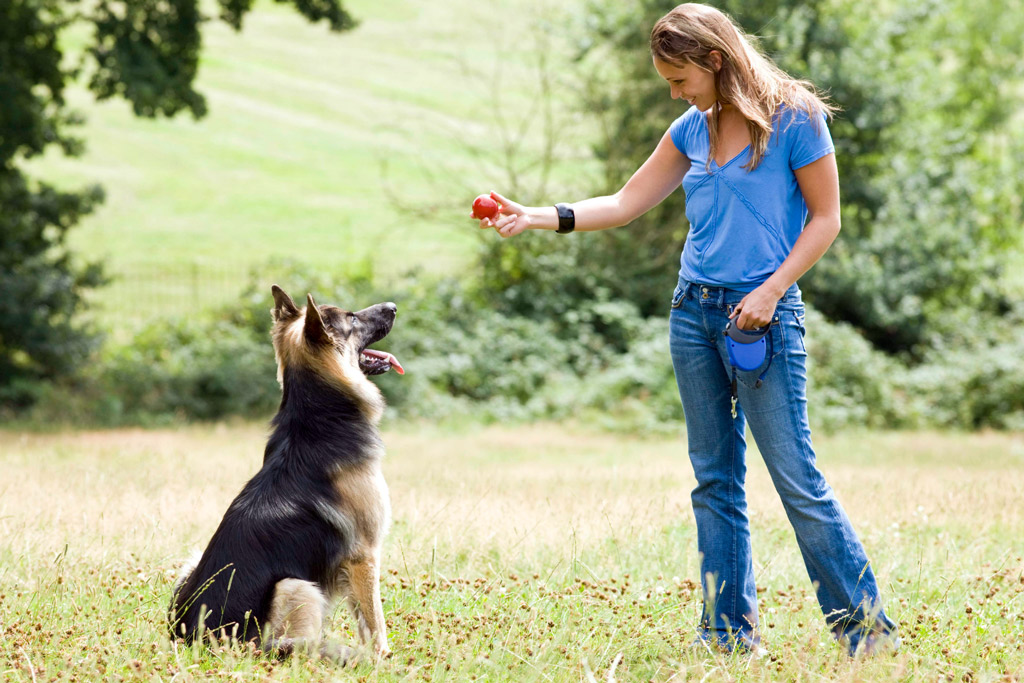
#3 – Brain Games
Brain games are fun activities that you can play with your dog to teach her new skills and increase her intelligence. Also, it’s a great way to teach your dog to pay attention to you, for instance, “The Airplane Game”:
- Find a quiet area with few distractions.
- Hold a treat in one of your hands, letting it protrude from your fingers so your dog sees it.
- Then, stretch your arms out as though you were an aeroplane while keeping the cookie in clear view.
- Your dog could be wither staring at the treat or barking, jumping… to get it. Just ignore her and wait patiently until she looks into your eyes.
- The moment she makes eye contact with you, say “yes” and let the treat fall to the ground so she can get it.
- Repeat as many times as you like since it’s a great way to reward your dog for paying attention to you.
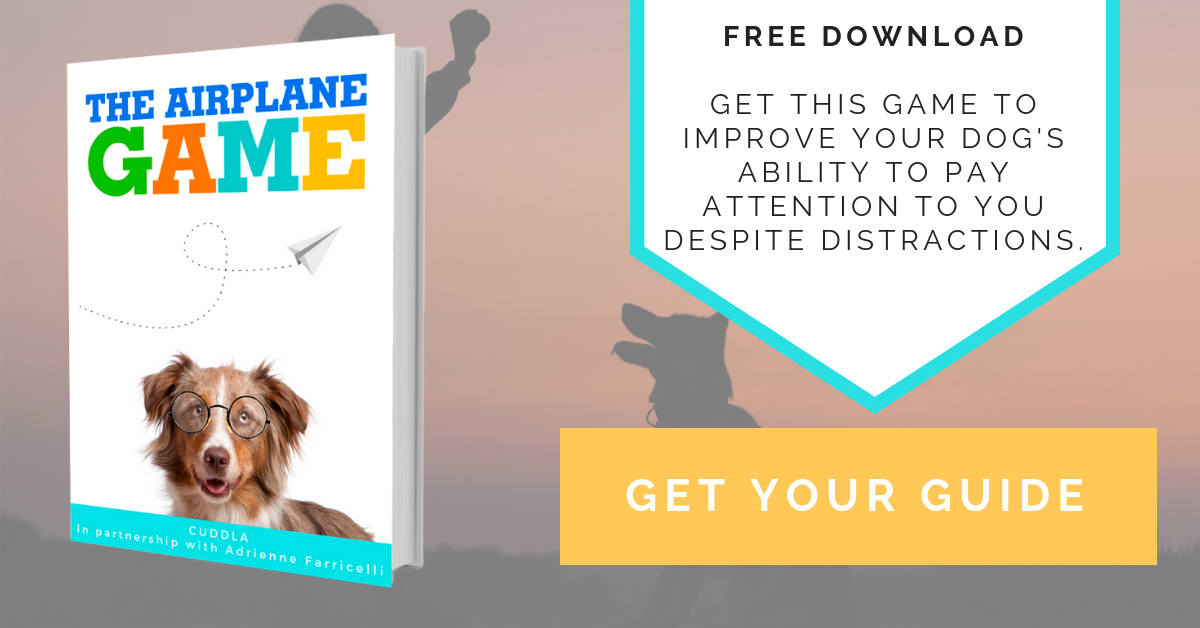
Have a look at the Airplane Game in action:
Dog Exercise Equipment: none, just small treats that fit in your hands 😉
P.S. If you like this game, you can download the Airplane Game here.
#4 – Tug Games
A good game of tug doesn’t take up a lot of room, but it does use up a lot of your dog’s physical energy! Also, it’s a great game to practice commands during the game and a suitable avenue for a dog’s inherent need to bite and chew (potentially preventing destructive behaviour at home).
For a safe tug game, play this game with a set of rules that your dog understands and follows (i.e., a structured game of tug).
- Bring out the tug toy.
- Tell your dog when to engage with the toy on command (“get it”).
- Play tug moving the toy from top to bottom, or vice-versa.
- Then instructs your pooch to release the toy on command (“ drop it”).
- Alternatively, you can practise some commands such as “sit” or “down” in between tugging sessions.
- Repeat steps 2 to 5 for up to 5 minutes.
- To finish the game, tell your dog to “drop it” and reward the dog with a treat and immediately put the tug toy away until next game.
Insider Tip: When playing tug, move the toy from top to bottom, or vice-versa. However, don’t move it side to side since this encourages aggressive behaviour. If playing tug-of-war with your dog becomes over-stimulating or aggressive, you should avoid it until you correct this behaviour.
Since tug games are mentally and physically fatiguing for dogs, you should play in short intervals (5mins or less) and gradually increase the length of the game. Also, if you play for too long, your dog will lose interest and wander away.
Another variation to tug games is the spring pole. It’s a spring connected to a rope that hangs from a tree branch or a post, with a toy attached to the end. This allows your dog to play tug by herself.
Dog Exercise Equipment: a rope toy or a toy with two ends. Alternatively, you can use a spring pole! (Amazon links).
P.S. Look for tug toys that are durable enough to stand up to rigorous pulling and long enough that you can safely hold onto one while your dog pulls on the other.
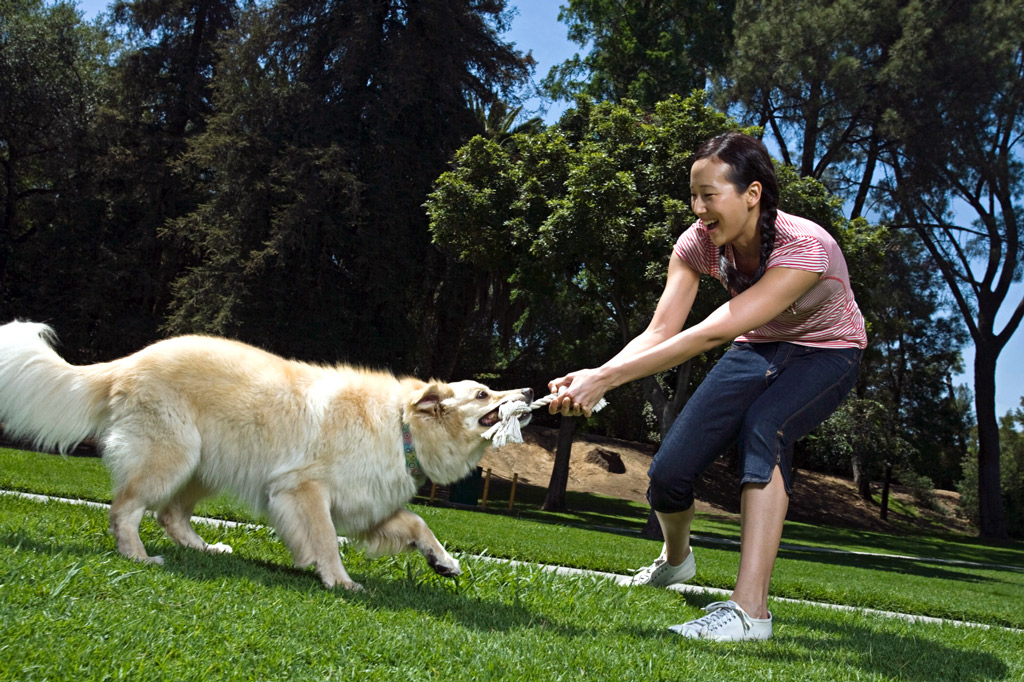
#5 – Water Hose Game
If your dog enjoys playing with water, using your hose in the garden it’s a great way to have fun and keep your dog cool at the same time during hot weather.
How can you find out if your pooch likes water?
So far, I can tell if a dog likes water every time a give them a bath outdoors. Some dogs go crazy chasing the stream of water, but I had no luck so far… all the dogs I had or fostered had literally run away from it!
Once you know your dog is ready to get wet, you can either point the hose at your doggy or leave the sprinkler to do its job in the middle of the garden 😉 This is one of those games where your dog (or water bill) is doing all the work!
Dog Exercise Equipment: a garden hose or sprinkler.
Best for: dogs who enjoy water 😉
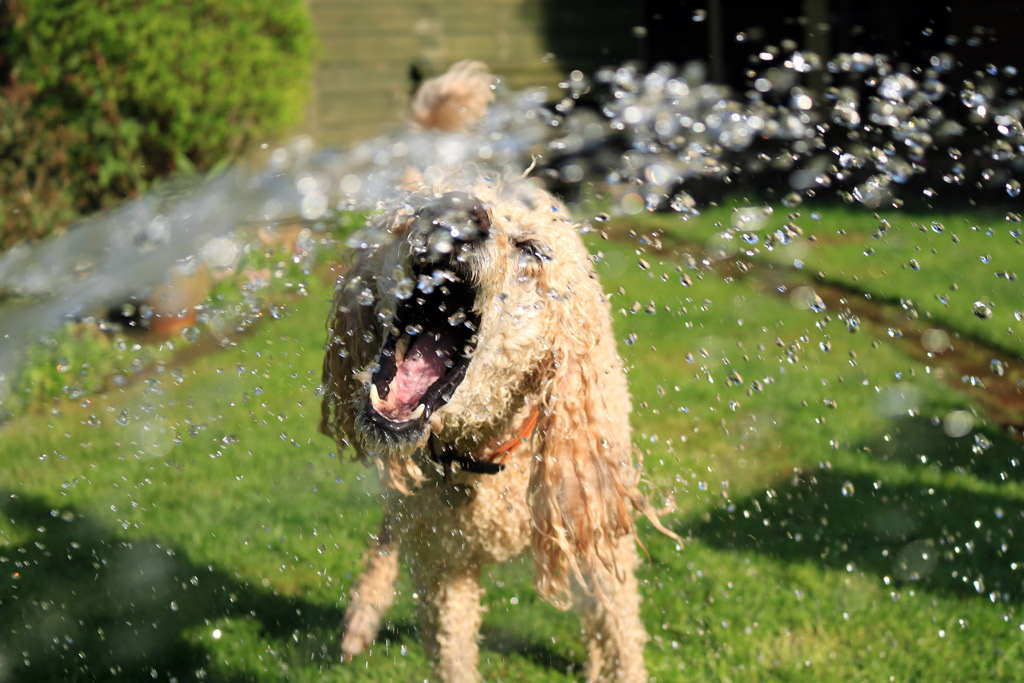
#6 – Tidy Up Your Toys Trick
Continue training your dog and teaching her new tricks! A dog’s brain never loses its ability to learn new things so long as you give it a chance.
Once your dog has mastered basic commands, it’s time to start working on some cool new tricks, like roll over, sit pretty, or high-five. Also, you can create a bigger challenge for your pooch and teach her how to tidy up her toys!
How to teach your dog to tidy up the toys:
- When your dog knows the “drop it” command, teach her to pick up a toy.
- Put the toys container nearby.
- Encourage your dog to go to the container, and once she’s standing over it, give her the “drop it” command.
- Praise your doggy like crazy, and repeat the process.
- Eventually, with lots of practice and consistency (do it every time after playing), you’ll have your pooch tidying up after playtime.
They say that the tricks and skills many dogs can learn are limited only by their owners’ imagination.
There’s nothing better than learning new things to keep your dog’s mind sharp throughout her life. The brain is like a muscle – if you don’t challenge it, it won’t grow!
That’s why the best way to keep your dog mentally active and smarter is by teaching her new tricks. If you want to teach your dog new tricks (like tidying up her toys) in a fun and highly rewarding way, check my favourite training method.
Insider Tip: Keep training sessions short – about 15 to 20 minutes – and always end on a positive note. For instance, if your dog hasn’t quite grasped the last trick, go back to one she knows well and end your session with that one instead and reward her thoroughly. This will make her excited about training and looking forward to the next session.
Finally, training will you strengthen your bond and communication skills with your pooch. Plus, you will have some great fun showing off what you have taught her and she will LOVE being rewarded for learning new commands and tricks
Dog Exercise Equipment: any toy you have at hand 😉
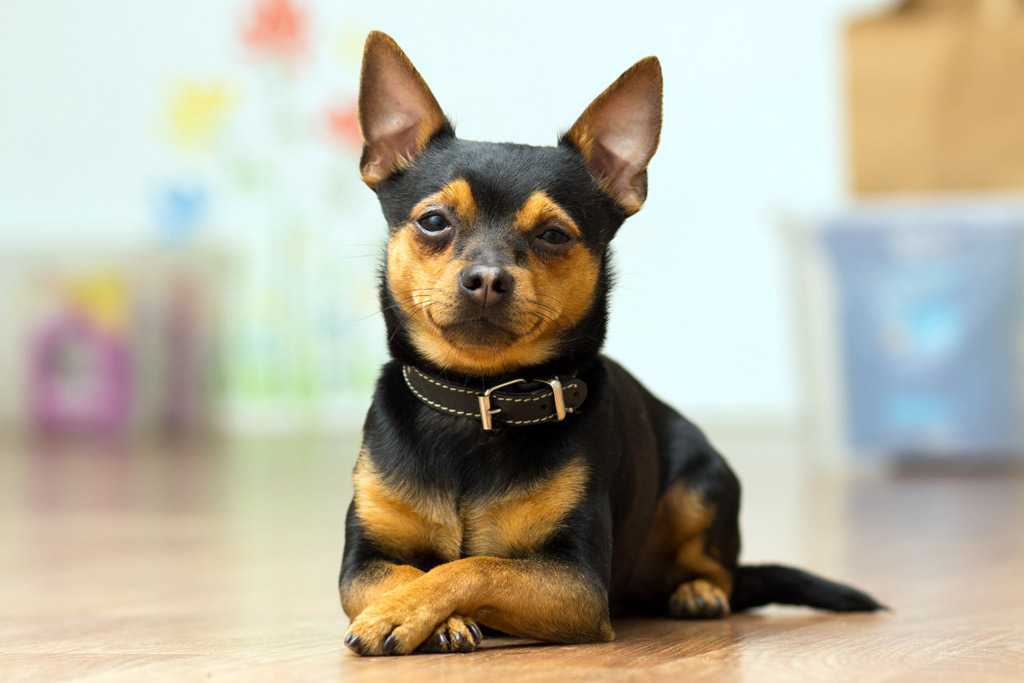
#7 – Sandbox or Digging at The Beach
For dogs who like to dig, I would recommend investing in a sandbox unless you want your pooch digging up the new flowers you have just planted. I’ve been there and it can get very upsetting when your dog digs repeatedly 🙁
Not all dogs like to dig, but for those who do, a sandbox is a handy solution to let them fulfil their natural instincts in a controlled manner.
- Get a sandbox for kids, the size will depend on your dog’s size really (not the size of your garden), so make sure you have the space for it!
- Fill it with clean sand.
- Bury your dog’s favourite chewies.
- If it’s the first time your dog is playing with a sandbox, show her how to dig the toys up.
- Soon she will understand that she will be rewarded for her efforts — and you will avoid having to deal with a messy garden or fill in another hole along your fence!
Insider Tip: After your dog finishes playing, cover the sandbox to avoid neighbourhood cats and other animals using it as a litter box.
Another way to avoid your dog digging where she shouldn’t is a trip to the beach! For those of you that have a beach nearby or like making the effort to get to one from time to time, this activity works wonders for your dog! Just the change of scenery brings so many new smells and for water lovers, the get the change to get wet too.
Dog Exercise Equipment: a compact plastic sandbox or bigger wooden sandbox with covers, sand and a chew toy – such as a textured ring or a flavoured bone (Amazon links).
P.S. I have also found other dog toys for diggers that work really well, such as iDig Go Digging Toy by iFetch and a Dog Snuffle Mat (Amazon links).
Best for: diggers 🙂
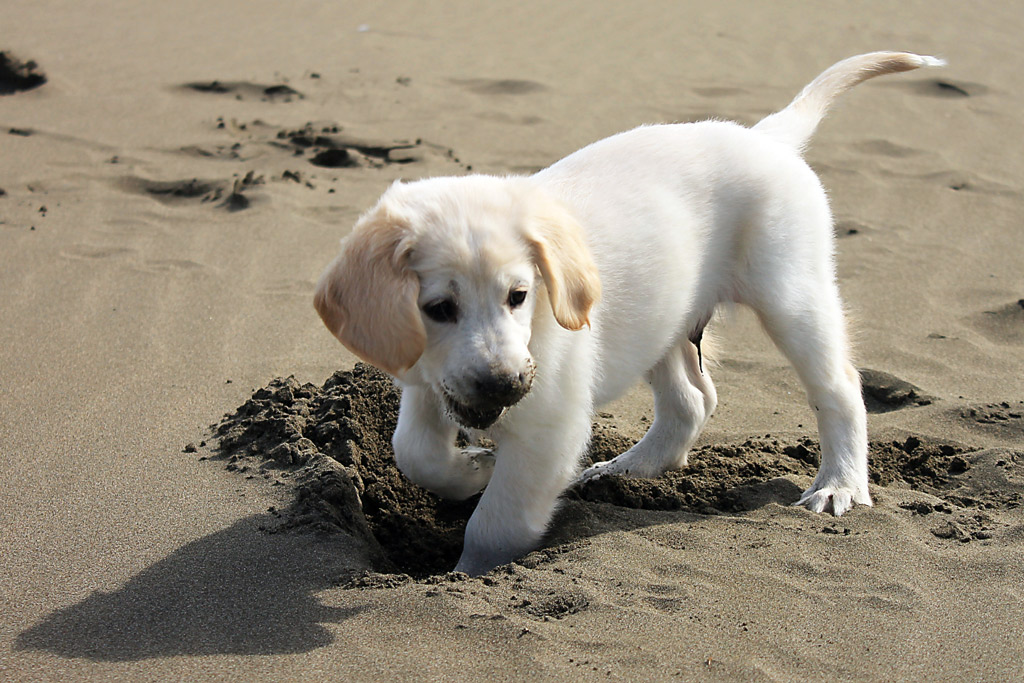
#8 – Jolly Ball
A jolly ball is a nearly indestructible ball for dogs that they push and chase around. They come in a variety of sizes, styles and are also available with a handle or rope attached for tug games.
This toy is particularly suited to herding dogs since it fulfils their natural instincts. Also, it’s a very popular game for breeds such as Pitbulls and Staffies.
Dog Exercise Equipment: a jolly ball (Amazon link) is great because it comes in different sizes and colours, so you can get the appropriate size for your pooch’s size.
Best for: herding dogs (like Australian Shepherd, Border Collie, German Shepherds, Collie, Corgi, etc.), Pitbulls and Staffies.
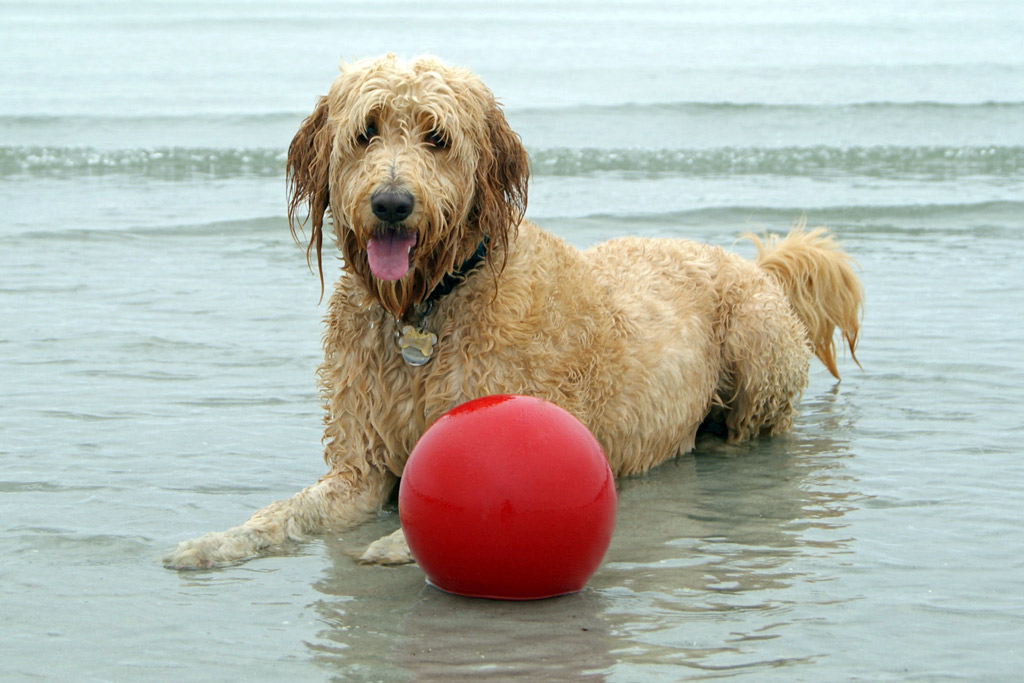
#9 – Backyard Agility
Setting up an obstacle course for your furry friend in your garden is another great challenge and a great agility exercise. The goal is to create a circuit for your dog to run along and jump over things.
You can include tasks such as the weave, hurdle jumps, tunnels or jumping through hoops or a platform to jump on and stay.
- Create a circuit in your backyard where you can place obstacles and other challenges.
- If your dog needs encouragement, guide her through the tunnel and obstacles for her to jump over.
- Reward your dog with a treat and some cuddles.
Dog Exercise Equipment: dog agility set (Amazon link) which comes with a hula hoop, free-standing weave poles, and a dog tunnel (very easy to store away).
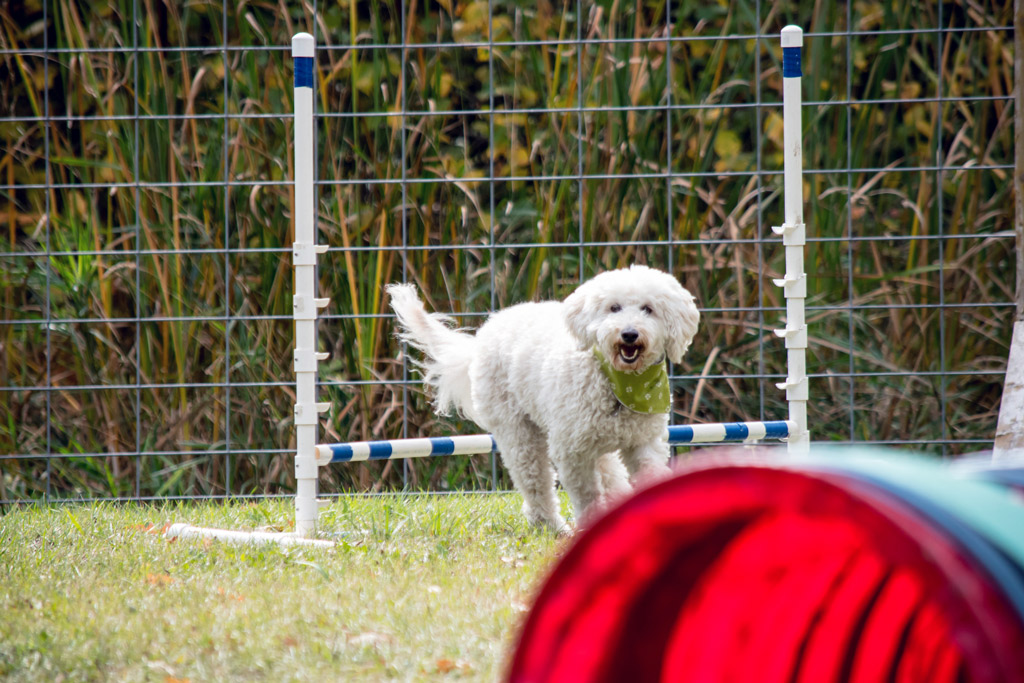
#10 – Dog Pool
A shallow plastic pool can mean hours of backyard fun during warm months when your dog wants to stay cool.
Also, you can add some floating toys and balls to the pool to add more fun. Treats can definitely help persuade sceptical pups and dogs to get their feet wet.
I personally have a foldable pool that I also use to bath my pooch in the garden during the summer!
Dog Exercise Equipment: a plastic pool or a more practical option, like a foldable pool (Amazon link), which they come in different sizes.
Best for: dogs who love water!
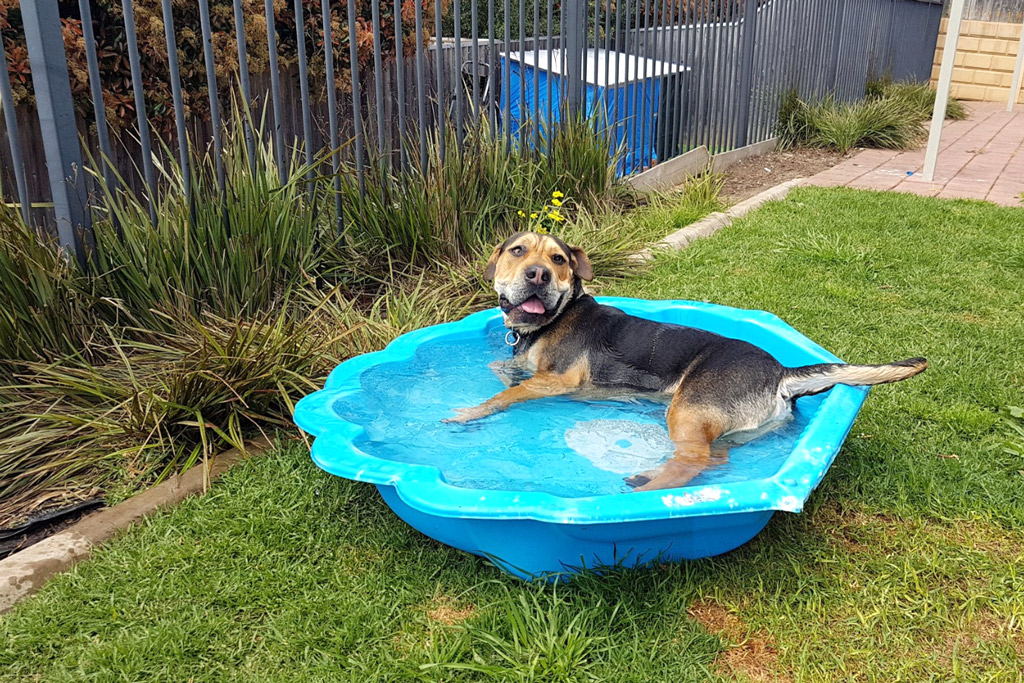
#11 – Chase Bubbles
Dogs with a strong prey drive (hunting breeds) love chasing bubbles. A few minute sessions of chasing bubbles (3-5 minutes) can work wonders for your dog. Just whip out your wand and let your dog pop bubbles until she’s tired!
You can use bubbles made for kids, bubbles made for dogs or make your own. Regardless of which one you go for, bear in mind that they can upset your dog’s stomach if they ingest too many. Also, bubbles can irritate your dog’s eyes, so remember to wipe off her face afterwards.
Because of these, I would limit the number of times to play this game or completely avoid it if your dog shows no interest in bubbles.
That being said, if your dog has no idea what bubbles are here are some steps on how to teach your dog to chase bubbles:
- Start by blowing a couple at a time.
- Point to the bubbles and encourage your dog to chase them around.
- Catch some yourself to show your pooch that there’s nothing to worry about.
Dog Exercise Equipment: nontoxic bubbles (kid’s bubbles) or something more dog-specific, like bacon-scented bubbles or peanut favour bubbles (Amazon links).
P.S. You can make your own bubble mixture using glycerin and water. The glycerin that is derived from animal and plant sources is generally considered ‘safe’ and used as a sweetener and binder in dog food.
Best for: hunting breeds like Pointers, Labrador and Golden Retrievers, English Springer Spaniels, Beagles, English and Irish Setters, etc.
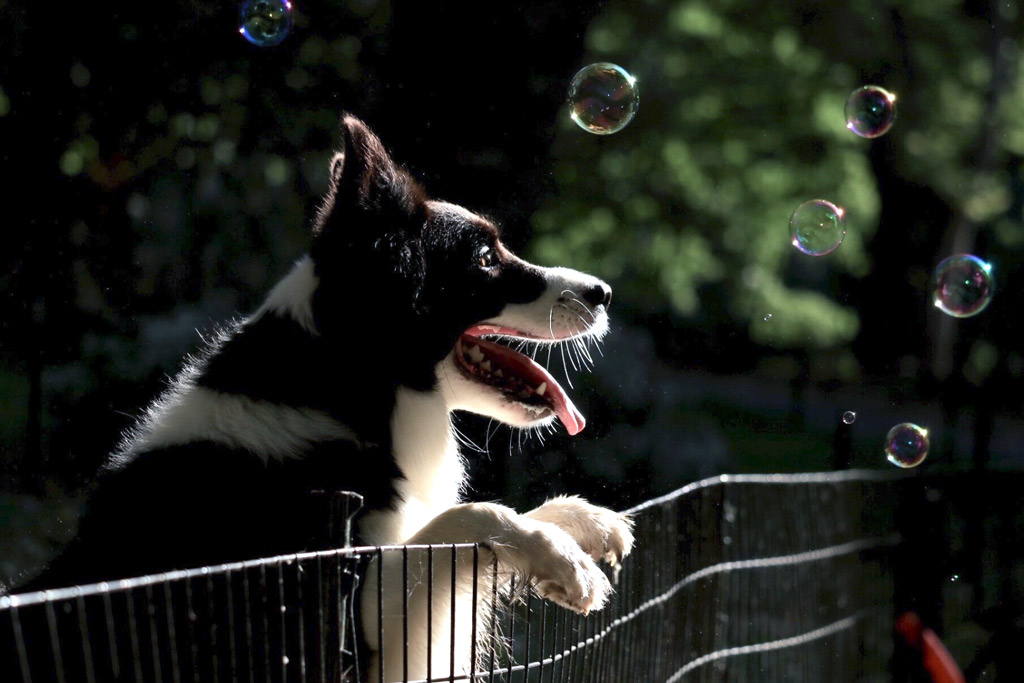
#12 – Grab The Leash Trick
Before you go for a walk, you can have your dog go and grab her leash for you. Then, she can also fetch her harness!
Apart from your pooch learning a cool and useful trick, it gives you time to put on your shoes. Also, your dog is already entertained and engaging her mind before even leaving the house!
This trick can be great for those of you who have dogs that are eager to step out of the house and cannot control their excitement. It gives them a task to focus on and their excitement is channelled in an effective way.
If your doggy is spinning around, whining, and jumping while you get everything ready, check what I did with Max:
Max’s story: While I was fostering Max, although I didn’t get a chance to teach him to bring his lead to me, I did something else. To calm the excitement of this Springer Spaniel, I went through his basic commands: sit, give me your paw, down, up, and sit again. Then, whilst sitting down, he will raise his paws to help me put his harness on and will wait sitting down (“stay”) until I give him the “let’s go” command.
If you want to know more about teaching your dog to grab the leash and other cool tricks like identifying toys by name, check my favourite training method.
Dog Exercise Equipment: the leash you already have 😉
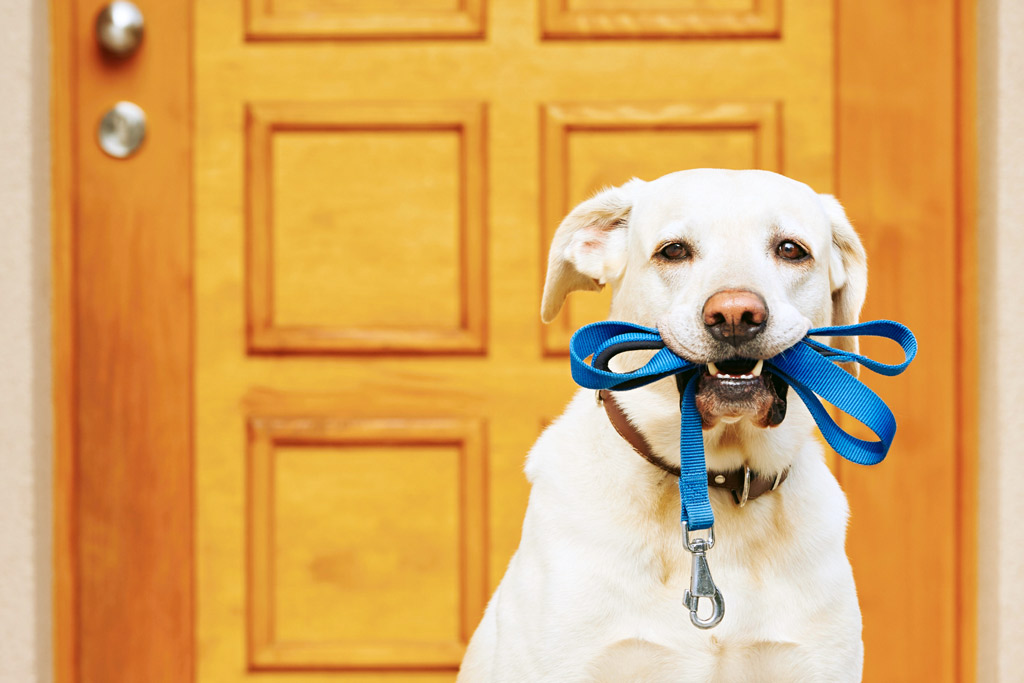
Other Dog Activities Outdoors
#13 – Dog Walks
It’s an obvious option, but some people fail to grasp how good it can be for them! According to VCA Animal Hospitals, the one-on-one time spent on walks can help deter attention-seeking behaviours like whining or barking. Plus, it’s a great way to bond with your dog.
Different dogs have different walking needs. Check our How Often Should I Walk My Dog? blog post to know your dog’s energy level and how much exercise and walking she needs.
However, walking is a type of exercise that is beneficial for every dog. They need daily exercise to stay in shape, both physically and mentally. Physically, it’s an easy way to release some pent-up energy. Mentally, a walk allows your dog to stimulate the mind with the sights, sounds and smells they come across.
Ideally, your dog can have some off-leash time in the park once she recalls and responds accordingly to the “come” command. Alternatively, you can use a retractable leash to allow your dog more freedom while maintaining control. But not everyone likes it! I will advise you to consider the risk of both your pooch and you suffering from rope burns.
For some extra resistance, you can add a weighted vest or dog backpack (Amazon links) during the walk. This shouldn’t be more than 10% of your dog’s body weight. This prop is more than sufficient to tire her and strengthen her muscles without overworking her.
Other ways of increasing the resistance on the walk are to walk on sand or include uphill sections in the walk (refer to #17 – Hiking).
Dog Exercise Equipment:
- Dog harness:
- Option 1: dual attachment dog harness.*
- Option 2: step-in harness.*
- Option 3: single attachment soft harness.*
- A fixed-length short leash:
- For small dogs: a reflective dog leash,* it comes in different lengths.
- For medium or large dogs: a strong dog leash* works great because you get a better grip with a padded handle.
- Poop bags,* which can be unscented or lavender-scented.
- Bonus: a long fixed-length leash* for outdoor training sessions.
P.S. For dog fashion lovers, you can get a matching set of collar,* harness,* and leash* with a beautiful pattern. I think this option works best for small dogs because they aren’t that strong. If they pull you won’t get burned and the leash won’t get worn easily.
*Note: the links above will take you to Amazon.

#14 – Dog Sports
There are many dog sports that your dog would enjoy including flyball and agility. Consider enrolling your dog at a local club. You can either enter as a serious competitor or simply for fun! Also, dog sports can be a great way to meet other dogs and their owners.
Dog Exercise Equipment: none.
Flyball
Flyball is great for particularly energetic dogs. The goal is for dogs to run down an obstacle course and release a ball, which they then need to catch. Training your dog to do flyball also keeps their brain active, so they don’t get a chance to get bored.
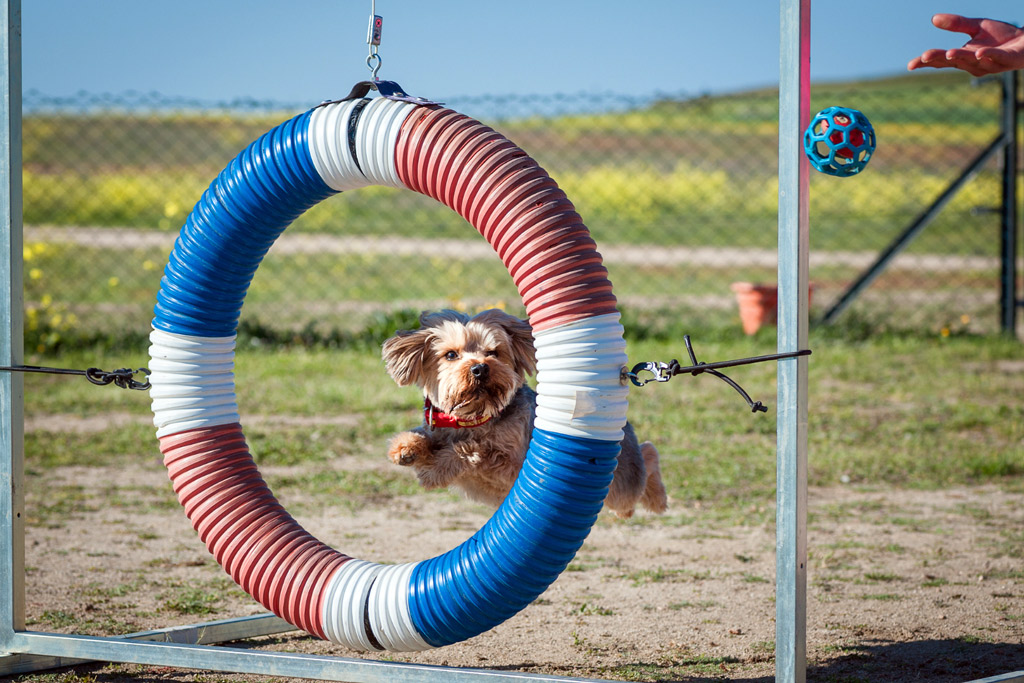
Agility
Agility is perfect for clever dogs with a lot of energy. It involves training your dog to do a number of obstacles on an agility course, such as hurdles, going through tunnels and even going across a seesaw. And you are more than welcome to run alongside your dog! (During the training, of course).
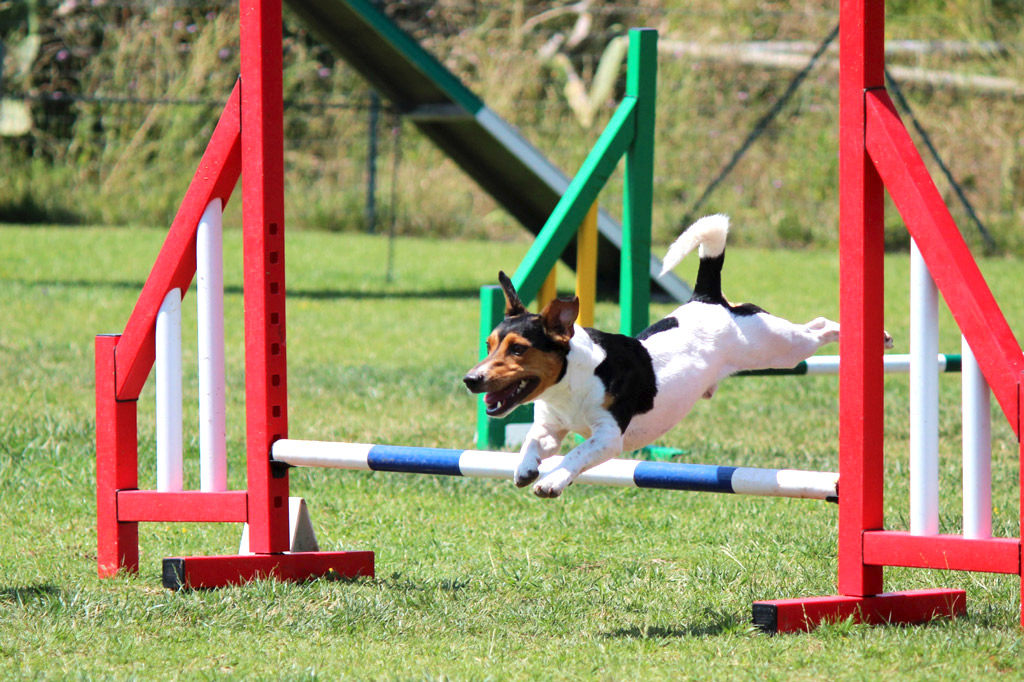
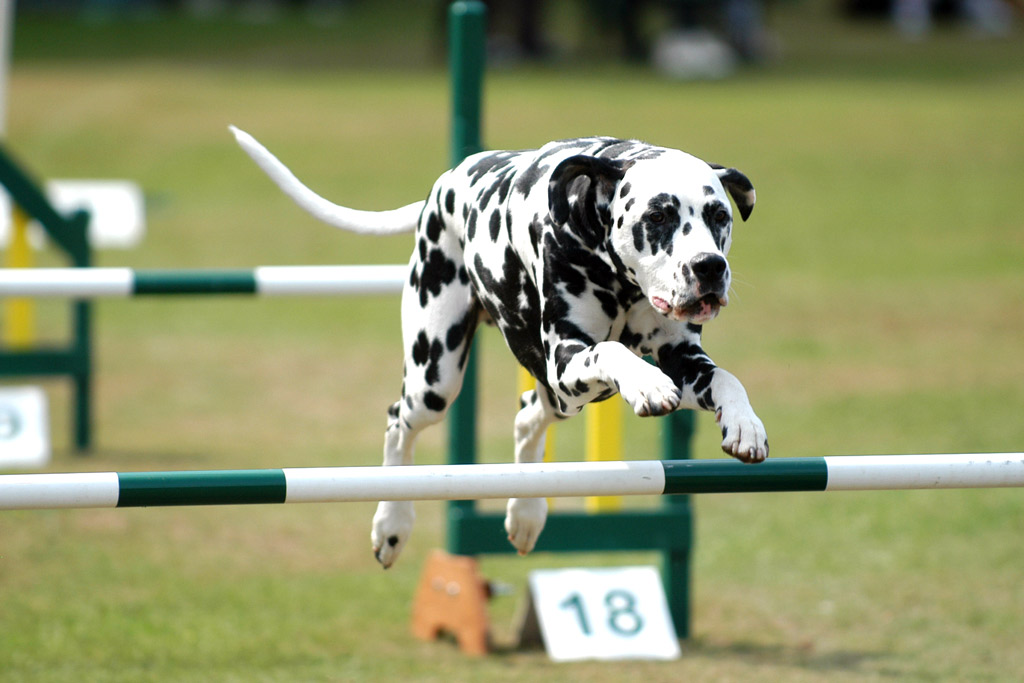
#15 – Running with Your Dog
The faster your doggy is moving the more energy they will release. Try running, biking or skating with your dog to really get her moving.
If your dog has good levels of stamina and can go for long distances, she can make a great running partner. At first, you can try short routes at a gentle pace so you both get used to it. Just be sure to build up the distance and intensity of the activity gradually over time to prevent causing an injury to your pooch.
Dog Exercise Equipment: nothing extra, just your dog’s leash and harness.
Best for: dogs with good levels of stamina and can go for long distances.
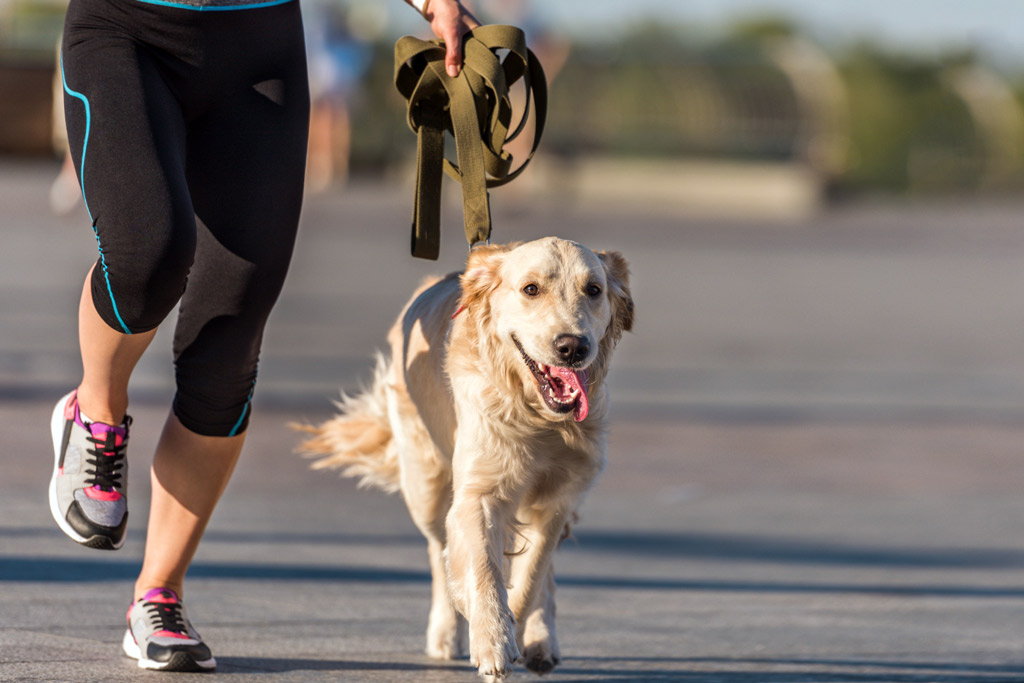
#16 – Cycling with Your Dog
For cyclers, bringing your pooch along can be a great way to spend time together plus get some exercise done. Like running, get your dog used to the exercise gradually.
However, cycling on the road is dangerous. You probably want to op for bike paths in the city or a trail in the countryside.
Dog Exercise Equipment: dog harness, leash, and travel water bowl (Amazon link).
Best for: dogs with good levels of stamina and can go for long distances.
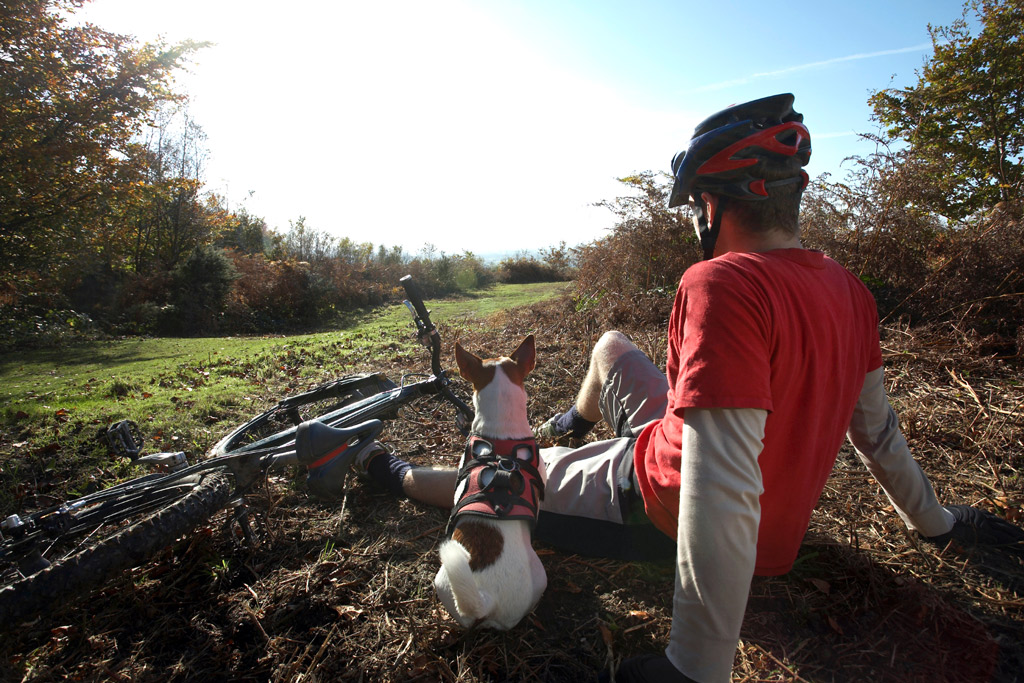
#17 – Hiking with Your Dog
Dogs love to be outdoors just as much as you do. Take your dog along on your next hiking adventure or explore some new parks and trails in your area.
Check out the route first to make sure it’s not too steep for your dog and you both can manage it (including the return journey, i.e, you have enough energy left for your way back). Remember to plan plenty of breaks to drink water and keep an eye on your dog to make sure she has enough energy left to get back to the start point.
Dog Exercise Equipment: dog harness, leash, and travel water bowl.
Best for: dogs with good levels of stamina and can go for long distances.
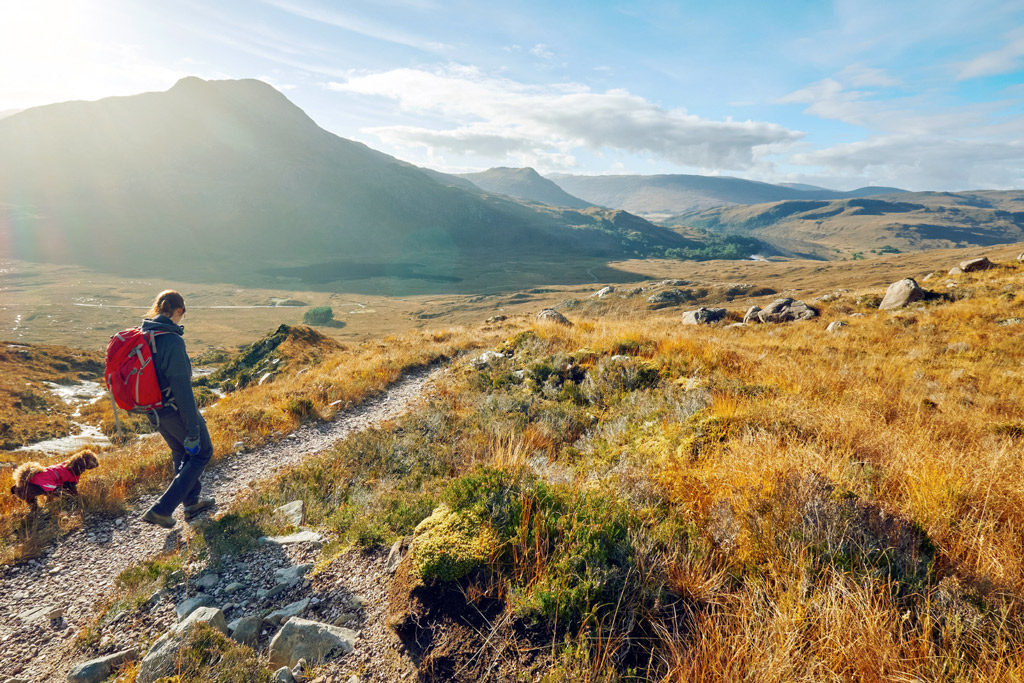
#18 – Swimming
If your dog enjoys swimming and you have access to water, swimming can be a great solution for you and your pooch. Swimming is low-impact exercise and also works great for dogs with joint problems.
First of all, you should take your dog to swimming classes before letting her swim in a lake, river or beach. Also, as a word of caution, doggie life jackets should be a must, regardless of how good of a swimmer your dog is. Plus, a life jacket can help your dog stay in the water longer for an optimum cardio workout.
Finally, if you are not sure if your dog can swim, check our How Smart Are Dogs? And 9 Other Facts To Know blog post (Fact #9 – Can All Dogs Swim?)
Dog Exercise Equipment: a life jacket (Amazon link).
Best for: dogs who enjoy the water, want to learn to swim or are natural swimmers.
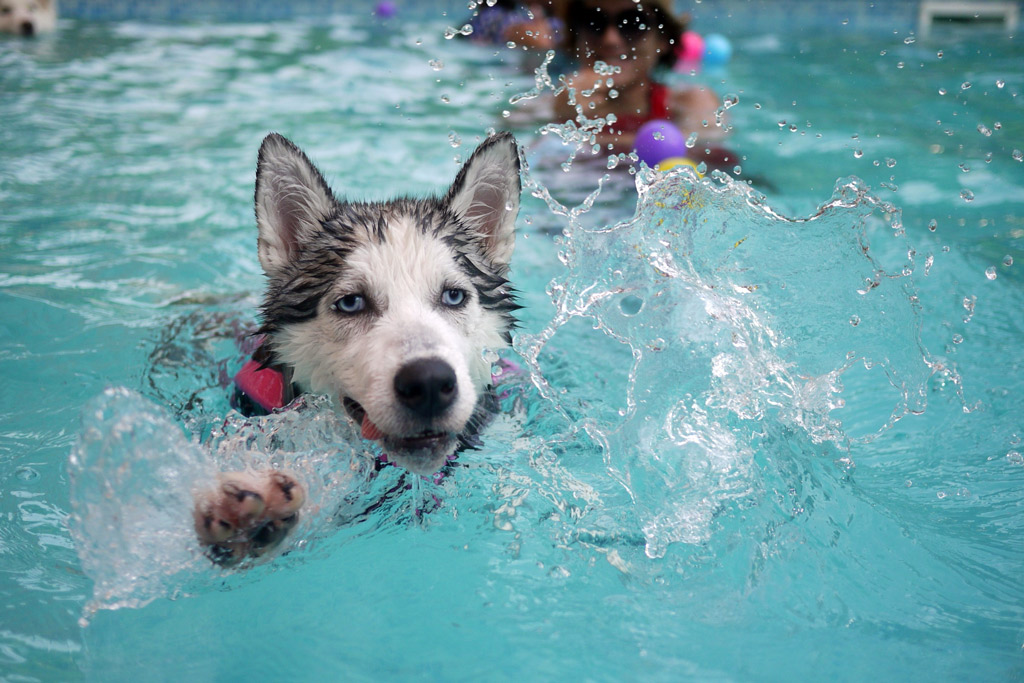
P.S. For indoor activities, check our Dog Exercise Indoors blog post and have fun!
